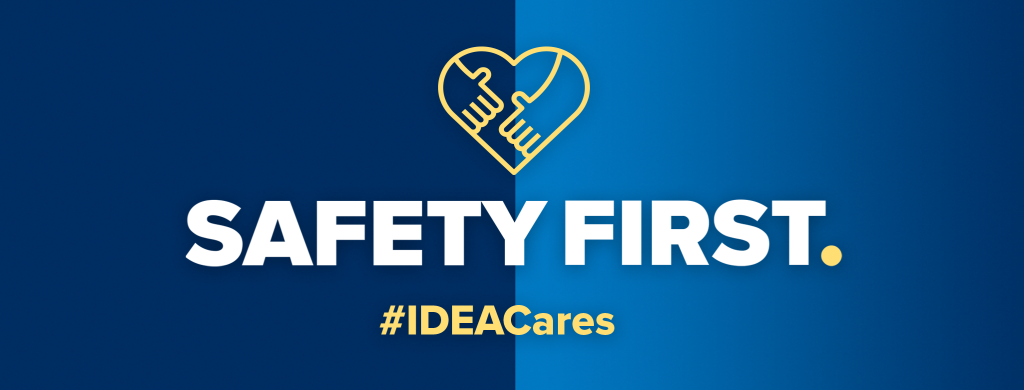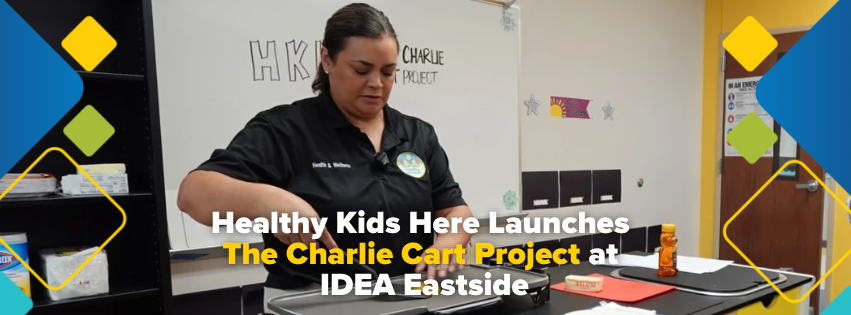IDEA Team & Family,
This week marks the one-year anniversary of the tragedy in Uvalde, Texas, a community I worked in for many years and continue to cherish. As we are painfully all too aware, the tragedy in Uvalde is one of many mass shootings that have shaken communities across the nation, many of which have occurred in communities we serve. We condemn all acts of violence, and our hearts and thoughts are with every victim of these incredibly tragic events. Every child deserves a safe school environment and community where they can learn and grow each day.
As we stand united against school violence, safety is our top priority at every IDEA school community. As part of our commitment to providing a safe school environment, we focus on different school safety priority areas to continuously identify ways to enhance our practices and resources:
- Our campuses are closed campuses. Only IDEA students, staff, parents, and authorized visitors are allowed on the premises. Visitors use a single-entry point (front office) and are carefully screened before being allowed entry.
- There is a staff emergency response team on every campus tasked with leading the safety and security strategy for the campus. Team members must undergo 30-36 hours of training on the five stages of crisis management (prevention, mitigation, preparedness, response, and recovery), rapid response to medical emergencies, and behavioral threat assessment.
- Our district follows the Standard Response Protocol. We train and practice research- and evidence-based response protocols and daily practices with staff and students throughout the year (including executing a minimum of 23 safety drills).
- We use the Comprehensive School Threat Assessment Guidelines (CSTAG) and the Columbia Suicide Severity Rating Scale (C-SSRS) when responding to situations involving harmful, threatening, or violent behavior against self or others to determine necessary actions, interventions and partnerships with law enforcement and behavioral/mental health centers.
- IDEA Public Schools continues to invest in physical security measures to enhance the security of our buildings to meet and exceed local and state school safety requirements.
As partners in this work, we ask for your support in keeping our schools safe as we end the school year. We encourage parents and families to have conversations with students about the proper use of social media and the consequences of engaging in actions that impact school safety, such as making or sharing threats against other individuals or the school, or bringing prohibited items to campus (any kind of illegal substances, weapons or look-alike weapons: knives, toy and BB guns, pepper sprays, tasers). Please help monitor your child’s activities, check their backpacks, and remove prohibited items. Also, speak to them about reaching out to an adult and asking for help whenever they need support. As a reminder, legal and disciplinary action towards anyone who makes a threat are taken per our Student Code of Conduct.
This week, and every week, let’s do our part to ensure a safe campus where students learn and grow every day.
In honor and remembrance of all victims of mass shootings,
Jeff Cottrill, Ed.D.
Superintendent
RESOURCES TO TALK TO CHILDREN ABOUT GUN VIOLENCE
We know conversations about school violence can be difficult. Below are some resources you can use to have these important conversations with your child.
- Start the conversation.
It may never seem like the right time to start a discussion about school shootings with your child. But, according to experts, not talking about it can lead to feelings of worry and confusion while also opening the door to misinformation. - Emphasize safety.
Start by asking your child what they already know about school shootings. Allow them to express their concerns and ask questions. Reassure them and be honest – don’t lie to them. Address any inaccurate concerns that they may have (e.g., school shootings happen frequently; children are not safe at school). Don’t go into graphic details, put the emphasis on safety, and help them identify the plans in place to protect them in all types of emergencies. - Reiterate that it’s normal to be scared.
Everyone feels afraid when they’re in danger. Fear is how our bodies alert us and prepare us for action in times of danger. Help children understand that their natural reactions are normal. - Look for leaders.
Remind your child that adults – teachers, leaders and first responders – are working every day to keep them safe at school. The emergency drills that they may practice in the classroom are an example of this. - Watch for signs of trauma.
It’s normal for children to be a little anxious about school shootings and emergency drills. If children appear extremely fearful, angry, or withdrawn during or following an exercise, seek professional help. Involve mental health professionals in the development and implementation of drills and exercises. - Maintain a normal routine.
Keeping to a regular schedule can be reassuring and promotes physical health. Ensure that children get plenty of sleep, regular meals, and exercise. Encourage them to keep up with their schoolwork and extracurricular activities but don’t push them if they seem overwhelmed.
For further resources and information, please visit the following links:
- Helping Children Cope With Frightening News (English and Spanish)
- Anxiety Over School Shootings: Finding proactive ways to deal with worried feelings (English and Spanish)
- Talking to children about terrorist attacks and school and community shootings in the news
- Parent Tips for Helping School-Age Children after Disasters










